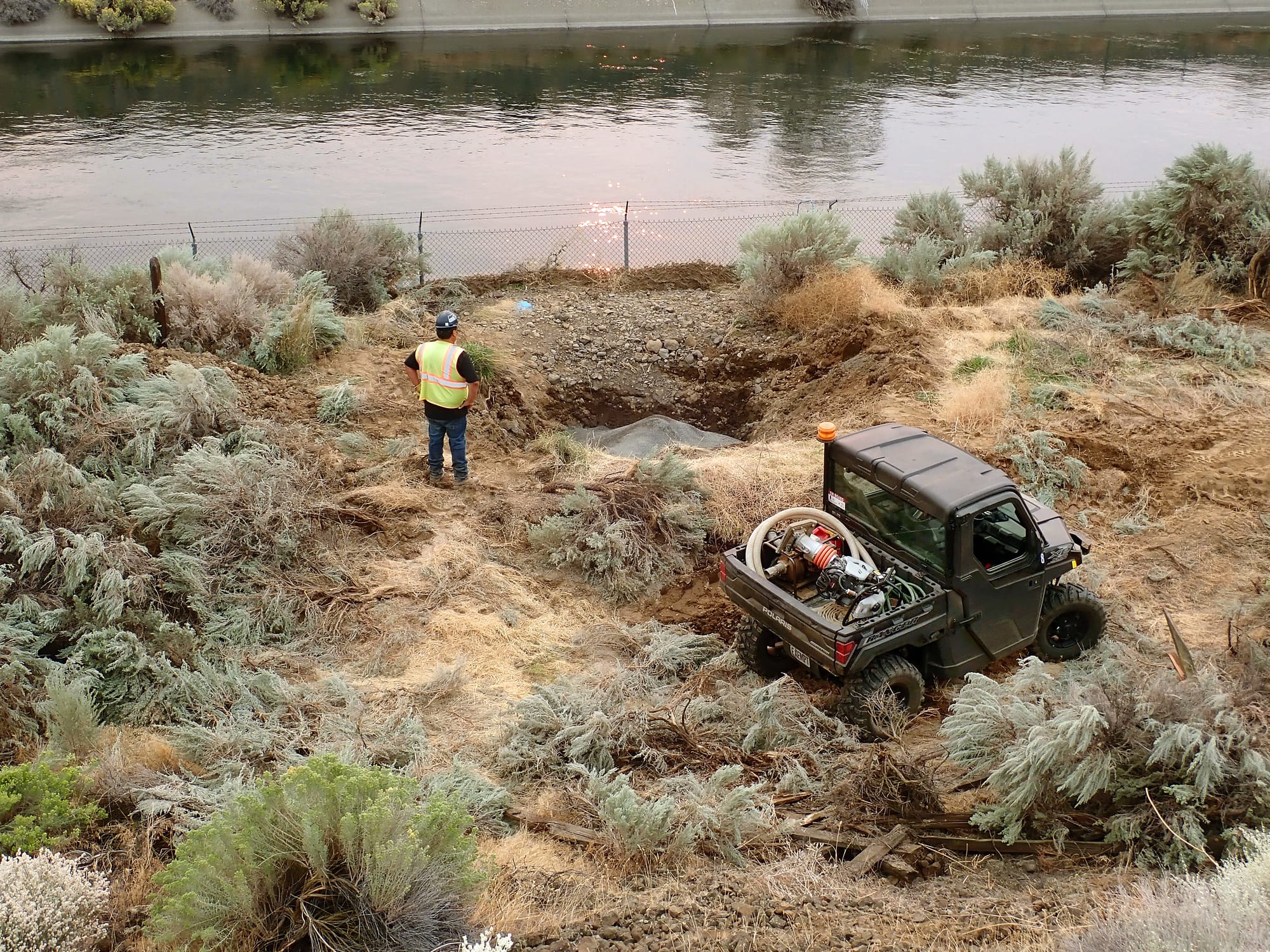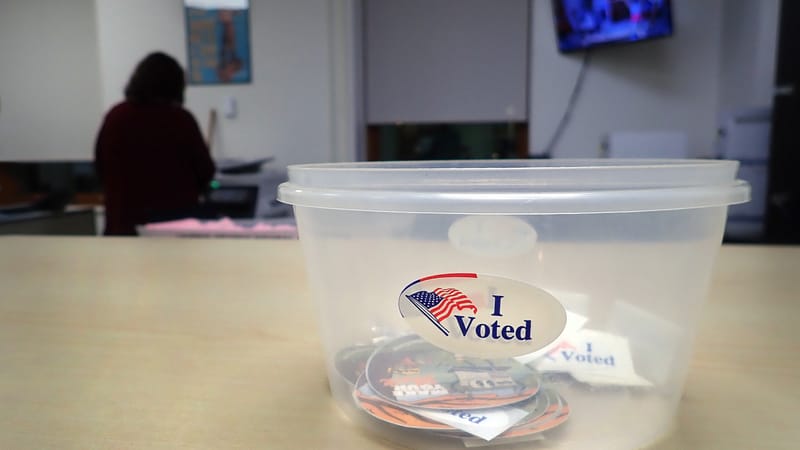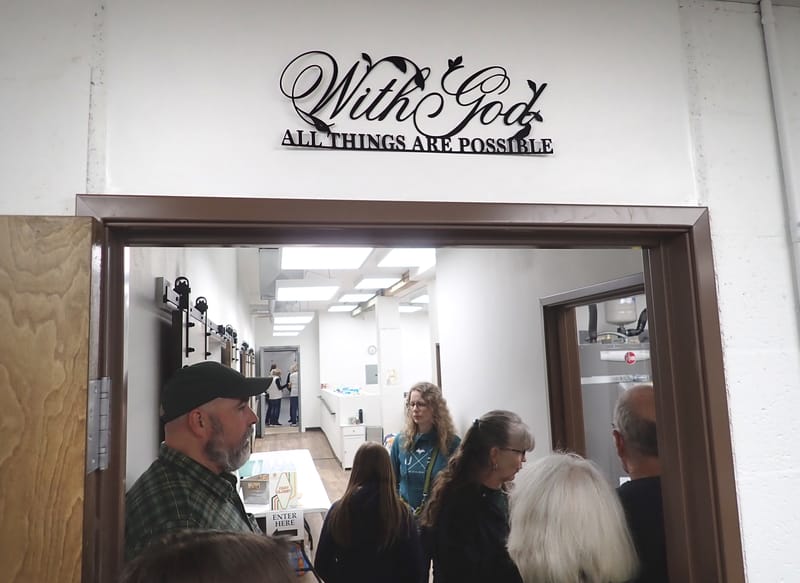Waters in the works: Ephrata city council gets an update

EPHRATA – Ephrata city officials on Wednesday provided several municipal water system updates, including why some residents found sediment in their drinking water this week, along with information on pending improvements to a telephonic system that issues alerts when problems arise – such as the Labor Day pipe breach on Beasley Hill.
Public works director Rob Harris told city council members last night that a new booster pump station constructed over the past year at the base of the East Division Street hill was fired up for the first time on Tuesday. During its initial test, the pump moved about 4,500 gallons of water per minute onto Ephrata Heights, stirring up some naturally occurring sediments in existing lines.
“This is why some homes (mostly on the SE/NE hill) are seeing discolored water,” the city said afterward in an online notice, adding, “There is no water emergency.”
It was suggested that homeowners run some water outside through a garden hose for a few minutes to assist in clearing the system.
The new pump is part of an ongoing $12.3 million infrastructure project that includes the nearly completed 3.8-million-gallon reservoir and reconstruction of a water well near Columbia Ridge Elementary School. The reservoir is expected to be functional by late October; the revamped well by next spring. Together, the components will increase both volume and pressure on the east side of town, which has seen increasing demand for water because of considerable housing growth over the past decade.
Responding to a question from councilman Matt Moore, Harris said both the city and residents may experience some leakage issues due to increased pressure in the existing water lines. “I don’t anticipate anything catastrophic,” Harris told the council. But, as a potential example, he thought connections on some water meters may leak.
“It’ll probably require some repairs,” he said, “but we need the water.”
If such issues arise, the city’s water customers “will let us know,” mayor Bruce Reim wryly observed. “We’ll hear about it.”
Harris also presented an “after-event” evaluation of the city’s response to a large water main that ruptured below two reservoirs on Beasley Hill over the Labor Day weekend.
The broken pipe allowed over 3 million gallons of water to rapidly drain out of the reservoirs and flow into the Bureau of Reclamation’s nearby West Canal. The leak left homes and businesses on the east and south sides of town without water pressure for several hours. Crews were able to isolate the fault, shut off the flow, and begin rebuilding pressure from other water sources and reservoirs to restore service in the city’s system.
The radio telemetry system which notifies the city shop of a malfunction “worked flawlessly,” Harris told council members. But alert messages did not go out to on-call staff because old copper phone lines at the city shop were not operating properly, he said.
Harris said the telemetry system began issuing alerts around 10:30 p.m. on Aug. 31, but a city worker was not informed until receiving a text message around 1 a.m. on Labor Day. Several personnel then responded in the darkness, trying to determine what was leaking and where in town.
The portion of 12-inch ductile iron pipe which ruptured was located in an isolated area surrounded by sagebrush and tall grasses within a few feet of the west rim of the irrigation canal, making it extremely difficult to find. After daybreak, city police observed a large water flow entering the irrigation canal about 100 yards south of the Grant County Youth Services Center.
Harris lauded a coordinated response by all city personnel in notifying the community of the problem and replacing the ruptured pipe within 36 hours of the leak’s discovery. “Representatives from every department in the city were involved,” he said. “I’m so proud of (them). It went really well.”
As a precaution, the city issued a water boil advisory to residents until lab testing confirmed no water contamination in the system on Sept. 4.
Harris said the city has been discussing converting to a VOIP system – that is, voice over internet protocol – with its phone system provider to improve messaging reliability. “I hope by next week to have a lot more information,” he said Thursday morning.
The pipe itself was likely installed and buried around 1950 -- before the canal was built over the top of it.
Harris said ductile iron pipe is typically very durable and long-lasting, and an examination afterward showed little evidence of rusting. But there were indications that a small portion of the pipe may have been damaged in the past – perhaps by a crawler tractor used in the area several decades ago – and had been slowly leaking until the semi-brittle material finally ruptured.
“When it cracks, it cracks quickly,” he explained.
Harris didn’t think there was anything the city could have done from a preventative standpoint to anticipate the problem, calling it “a freak accident.” And he believes the original pipe passing beneath the canal remains viable.
“We feel the integrity of that pipe is intact,” he said.




